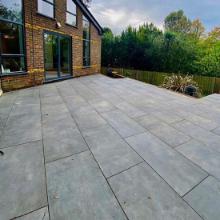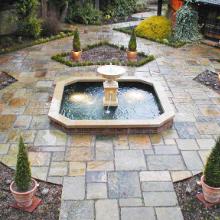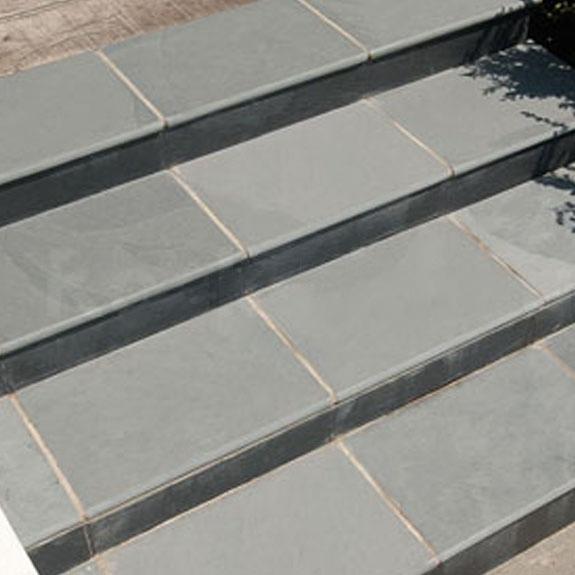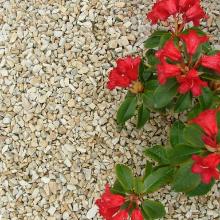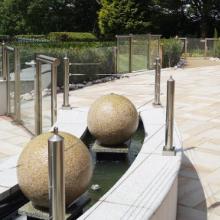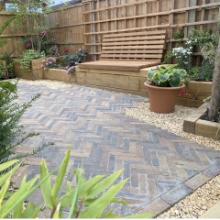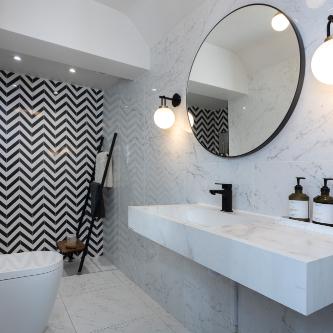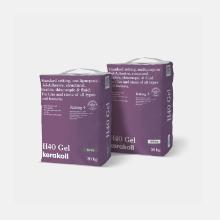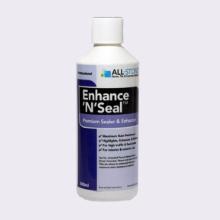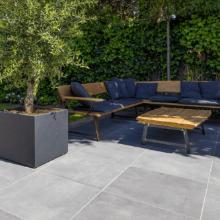The durability and performance of porcelain tiles — especially for outdoor paving — come from a process known as vitrification. This is the transformation of the tile body into a dense, glass-like structure during firing, giving porcelain its exceptional strength, water resistance, and long-term stability.
Vitrification occurs when the raw materials that make up a tile — typically kaolin clay, feldspar, silica, and other minerals — are heated to very high temperatures, usually between 1200°C and 1250°C. At this point, the silica and feldspar melt and form a liquid glass phase that flows between the mineral particles. As the tile cools, this glassy matrix solidifies, fusing everything together into an extremely hard, compact mass. The result is a vitrified tile — a material that is no longer porous, has a uniform structure throughout its body, and exhibits outstanding mechanical strength.
One of the key benefits of vitrification is its impact on porosity. Ordinary ceramic tiles or natural stones often have an open structure with tiny interconnected pores that can absorb water.
Porcelain, on the other hand, has a water absorption rate below 0.5%, meaning it is almost
completely impermeable. This low porosity makes porcelain frost-resistant, as there is virtually no room for water to enter and expand during freeze–thaw cycles. For outdoor use, this is critical — particularly in climates like the UK, where moisture and cold weather can quickly damage more absorbent materials.
Because vitrified porcelain doesn’t absorb stains or algae, it also requires very little maintenance.
Dirt and moisture remain on the surface rather than being drawn into the tile, making cleaning straightforward and long-lasting colour retention possible.
Vitrification not only prevents water absorption but also enhances mechanical strength. The glassy phase that binds the tile’s structure makes it highly resistant to scratching, abrasion, and thermal stress. This gives porcelain its exceptional durability — capable of withstanding years of foot traffic, outdoor weather, and even vehicle loads when installed correctly.
Vitrification is what makes porcelain tiles uniquely suited for both indoor and outdoor environments.
By creating a dense, glass-like structure, it provides strength, impermeability, and resistance to frost and wear. Whether used on a terrace, driveway, or interior floor, vitrified porcelain remains stable, attractive, and virtually maintenance-free for decades
